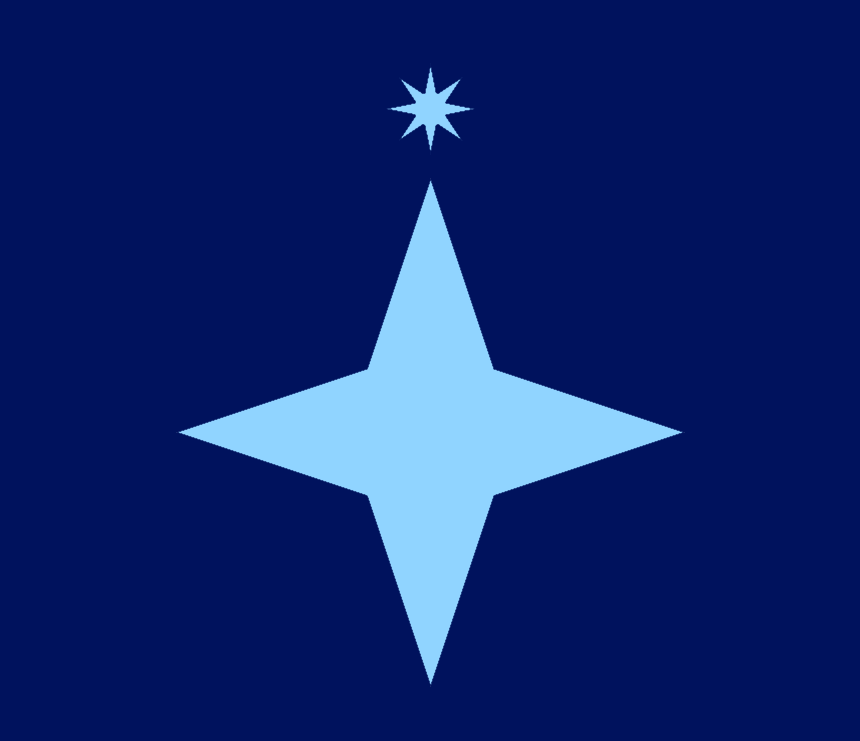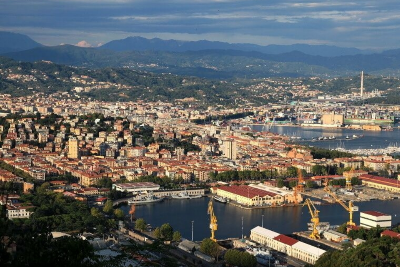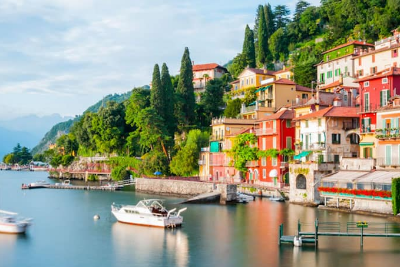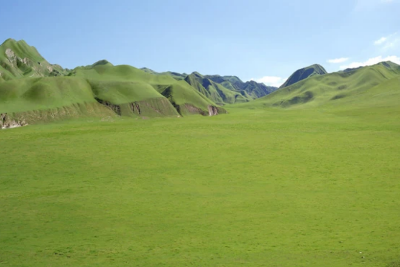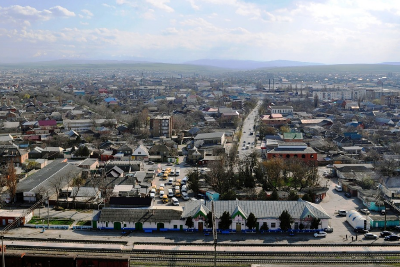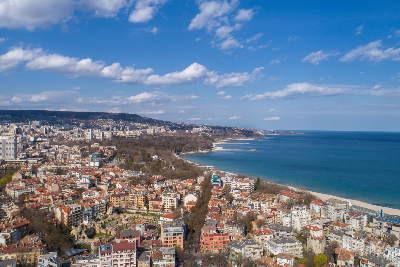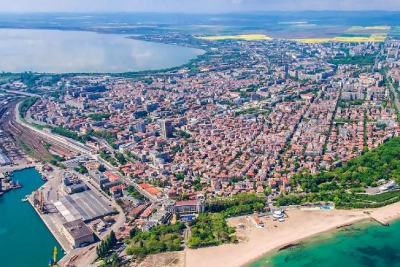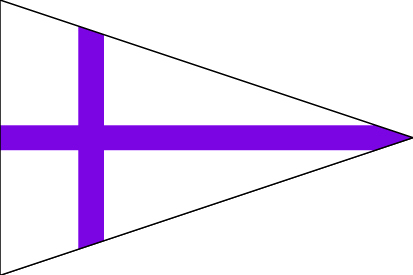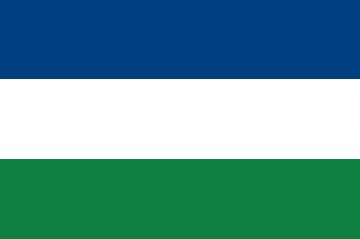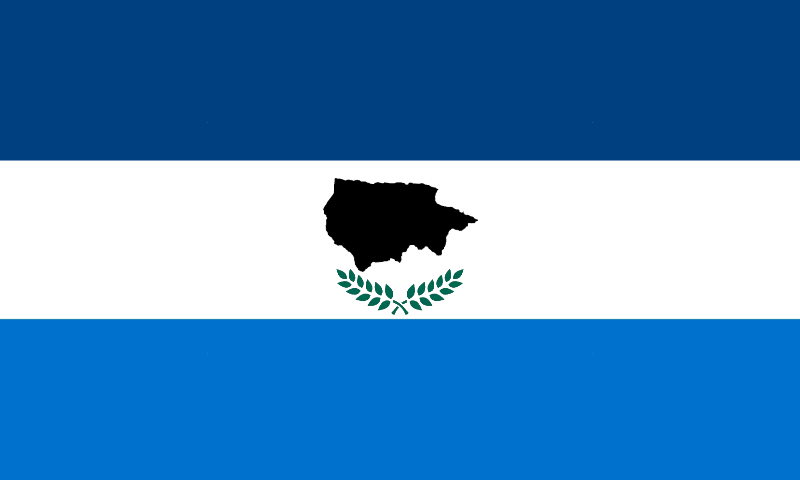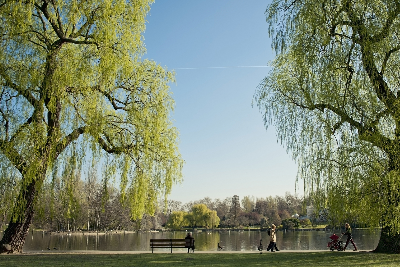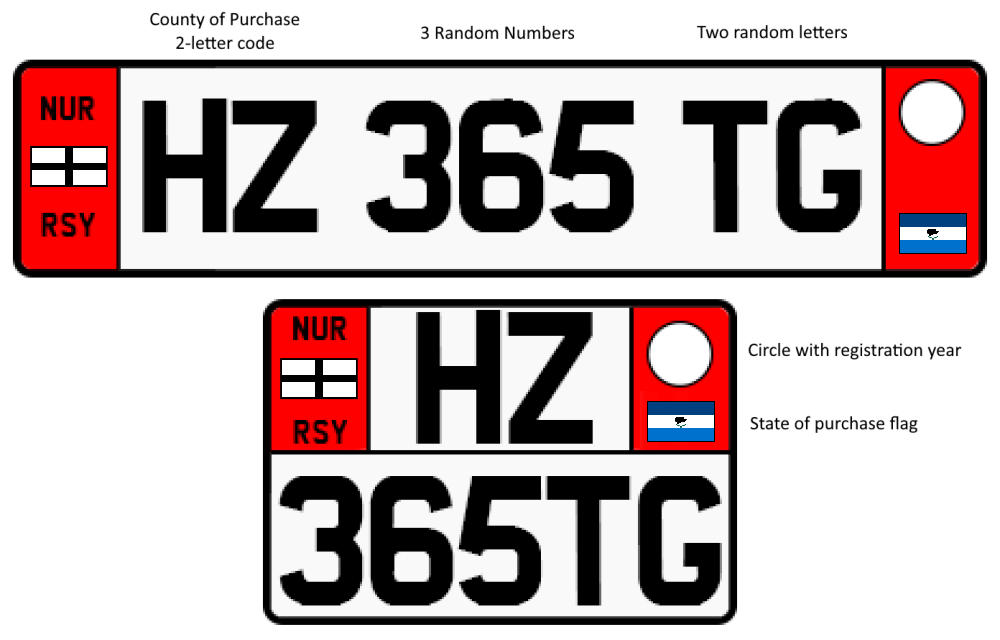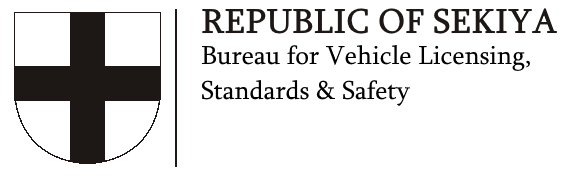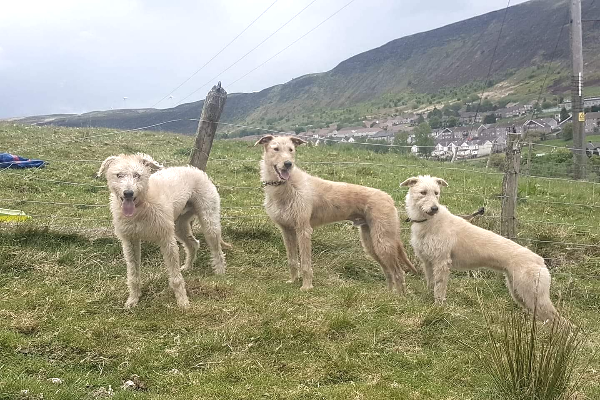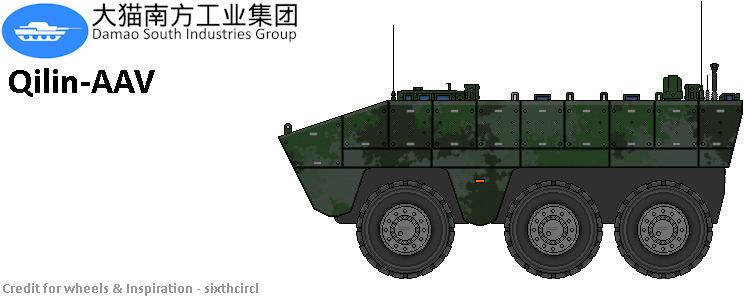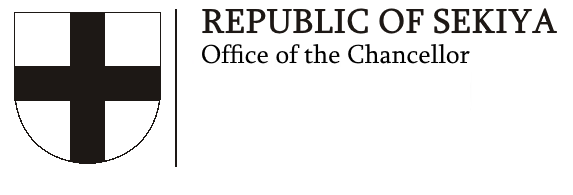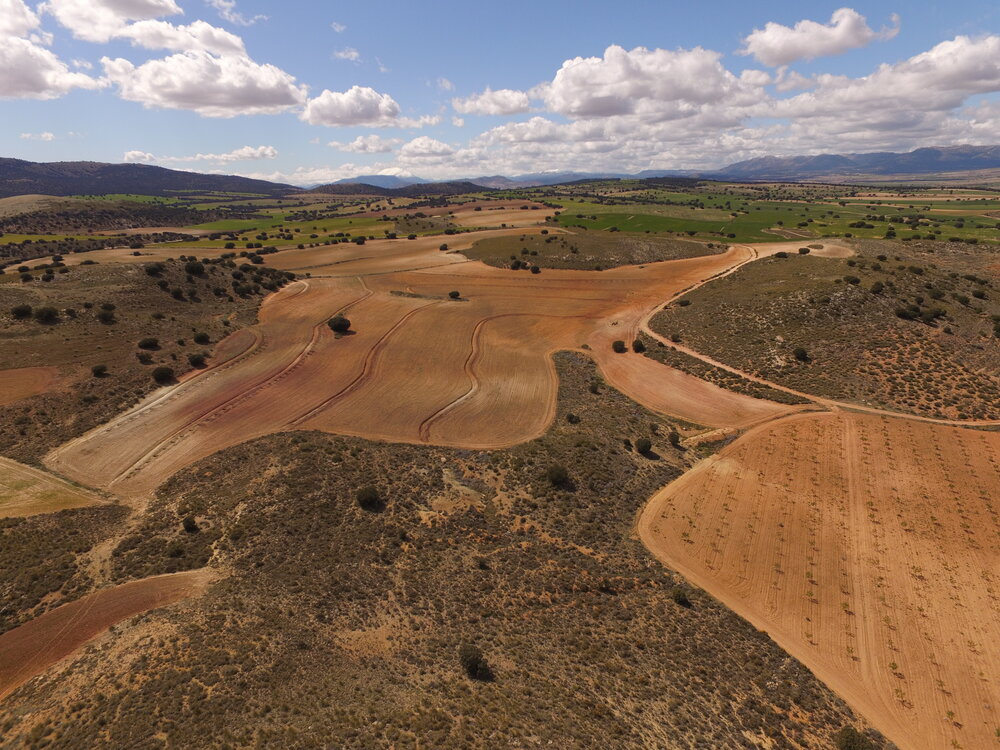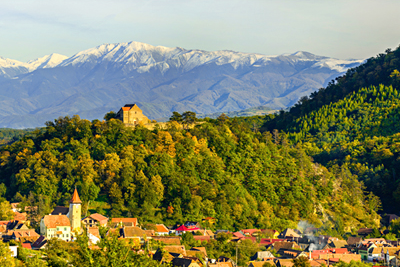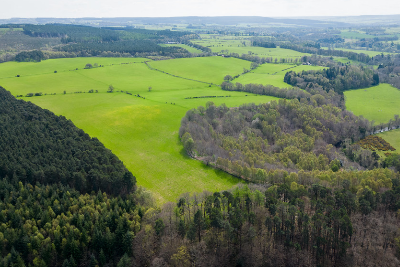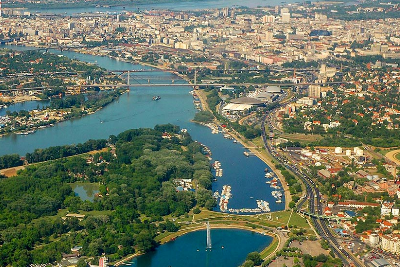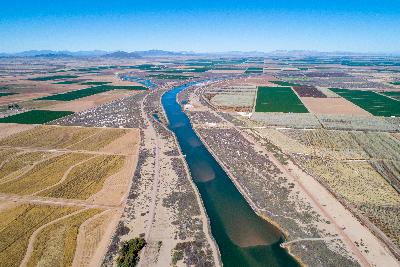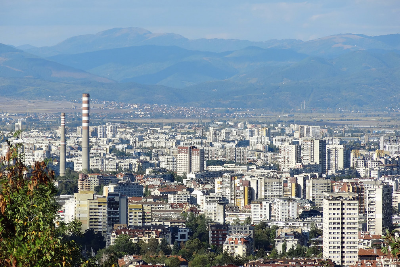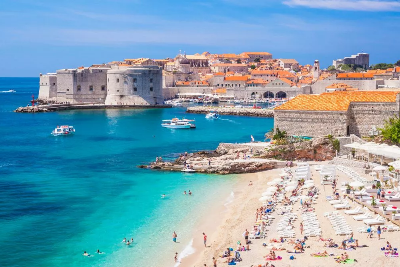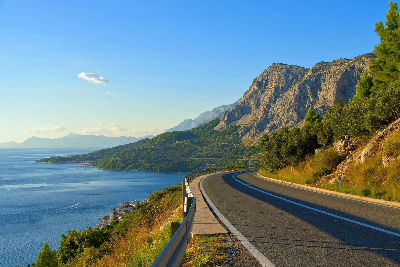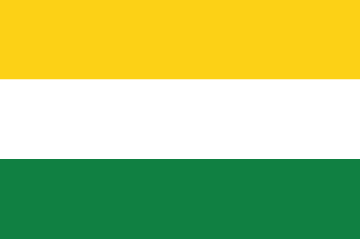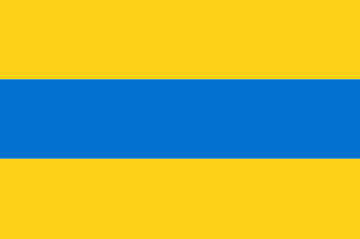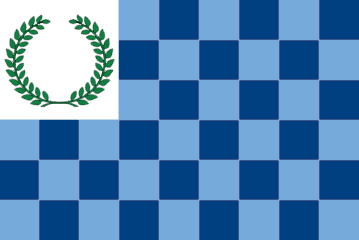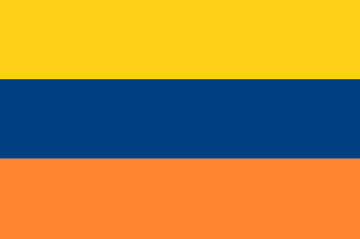-
Posts
234 -
Joined
-
Last visited
-
Days Won
22
Everything posted by Sekiya
-
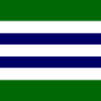
The Sekiya Post | Sekiya's Number One News Outlet
Sekiya replied to Sekiya's topic in Archive Esferos
Sekiya in the United Adaikes Badminton Invitational The United Adaikes Badminton Invitational is a highly anticipated event for many badminton enthusiasts in Sekiya. The country has a rich history with the sport, which has been loved by many since its introduction in the late 14th century. The Fischendorf Times article about Kaiser Wolfgang I's fondness for badminton sparked widespread interest in the sport, leading to its rapid growth across the country. Today, badminton is played by millions of people in Sekiya, with schools and local clubs offering opportunities for players of all ages and skill levels to enjoy the game. The three participants selected to represent Sekiya in the UABI are all accomplished badminton players with impressive records. Lotte Olson, at just 21 years old, has already made a name for herself in the sport, winning the upper bracket of the U18s Tournament at the age of 15. Jean-Luc Ries, despite suffering a dislocated arm at the age of 14, has made a remarkable comeback and won the prestigious Badminton Cup. Finally, Marie Erikkson, a former tennis player, discovered her love for badminton while serving in the Republican Airforce, becoming the best badminton player in the military. Sekiya's participation in the UABI is seen as a great honor, and many are eager to see how the country's talented players will fare against the other teams. The UABI is expected to be a fierce competition, with some of the best badminton players from across the world coming together to battle it out for the championship title. Regardless of the outcome, Sekiya's participation in the event is a testament to the country's love for the sport and its commitment to promoting athletic excellence. -
Timeline Ancient (B.F. 2000 - 0 A.F.) TBD Early (1 A.F. - 468 A.F.) TBD Dahmish Empire (469 A.F. - 498 A.F.) TBD Medieval (499 A.F. - 909 A.F.) TBD First Sekiyan Kingdom (910 A.F. - 931 A.F.) TBD Petty Kingdoms (932 - 1202 A.F.) Following the dissolution of the first Astanan Kingdom and the occupation by Giovanniland of Sekiya's 2 largest ports, the region entered a period of very little growth or change. Second Sekiyan Kingdom (1203 - 1325 A.F.) Declaration of the Second Sekiyan Kingdom The petty kingdom era in Sekiya broke, when in May 12 1203, Australis entered into a personal union under Astana. This led to much greater cooperation between the two kingdoms. This also gave Astana access to the Australese Waffenlager, the largest armoury in Sekiya at the time. Now with access to more manpower, industrial capability and weaponry, Astana declared the Second Sekiyan Kingdom. First Coalition War Lasting only 8 months, the first coalition war was fought between Astana & Australis against a coalition of the Custodian Mountain Republic, Nursylvanian Kingdom and the Vinningan Republic. Whilst Astana barely won, they managed to fully occupy the Vinningan Republic. Astana lost some land in the south to Custodia and Nursylvania, however took Vinningan as a puppet Kingdom, installing the Prince of Astana as the Vinningan's new king. First Sekiyan War (1326 A.F. - 1329 A.F.) The Sekiyan State (1330 - 1371) A small disclaimer about this time of Sekiyan history. In no way is Hazelhurst glorified by me or my nation's history in any way. This is simply my way of exploring how fascism could so easily destroy a country, and the lasting damage that this period of history still has on Sekiya today. Overview The Sekiyan State was established following General Rupert Von Hazelhurst's victory in the First Sekiyan War. The country's feudal system was scrapped for a dictatorship under Hazelhurst and his inner circle. The people of Sekiya suffered massively under the Sekiyan state. Despite strong economic growth, industrialization and urbanization during the Sekiyan State, it came at the loss of freedom and the lives of Sekiyans. Several of Hazelhurst's policies were: Centralization - The Sekiyan State had an extremely centralized government, focused around Hazelhurst and his inner circle. Governors were appointed to districts, created to better organised local police forces and taxation. These districts were deliberately drawn to divide communities so that it would be harder for a single district to enter a stage of revolt. Censorship - All media from the outside world was thoroughly checked before being allowed into Sekiya. Huge government spending - Hazelhurst was a staunch fascist, and believed that the people should work for the good of the state. Due to this, huge taxes were placed on the people, with humongous amounts of money being poured into rails, highways, industrial subsidies and several personal projects of Hazelhurst's, including palaces, resorts and monuments. Additionally, the police received heavy funding to put down radical movements. Extreme Autarky - Hazelhurst also enforced several laws that enforced Autarky in Sekiya, as he believed that Sekiya must be ready to fight on it's own at any point. Religious suppression - During this time, the Sekiyan State became an atheist state, and Hazelhurst caused the destruction and/or repurposement of roughly 50% of Sekiya's religious sites, with many being converted into monuments to the Sekiyan State. Historical suppression - Sekiyan education was heavily modified, with Sekiya being placed at the center of world maps in all schools, and pupils being taught that Hazelhurst was the first person in history to unify Sekiya. Around 33% of Sekiyan historical artifacts and recorded texts were destroyed. Urbanization - Hazelhurst recognized that Sekiya's agricultural economy wasn't going to take the nation into the future, and started stealing land from farmers and forcing them to live in the cities and transition to factory work. Discrimination - Hazelhurst's illness and death Hazelhurst became severely ill in 1367. In the decade leading to his illness, his inner circle had fallen apart, and the county was ready to collapse, with Hazelhurst being the only thing holding it together. Hazelhurst named Conrad Fuchs as his successor, however Fuchs' position in Sekiya was relatively weak compared to other players seeking control of Sekiya. The Second Sekiyan War (1372 - 1376) Overview Hazelhurst finally died in 1368. Fuchs led the country for 53 hours before Sekiya errupted into a civil war, and within a week, there were 7 factions fighting for control of Sekiya. Factions & Their goals There were 7 factions in the Second Sekiyan War: Conrad Fuchs' army - As the designated successor of Hazelhurst within the Sekiyan State, Conrad Fuchs was a devoted follower of Hazelhurst's ideology, poised to carry forward his legacy of tyranny. Capitalizing on his son's position as the governor of southern Pacifika at the time, Fuchs successfully garnered the allegiance of the Pacifikan Military District. Karl Baier's army - Karl Baier, a figure even more malevolent than Hazelhurst in Sekiya, aimed to bring about radical changes to the country. His tenure as Governor of Nursylvania witnessed over a million Dahmish citizens subjected to forced labor to fuel his war campaign. With a firm grasp over the southern region, Baier managed to compel the Dahme Military District into serving his cause. Rudolf Dasher's army - Rudolf Dasher, a high-ranking intelligence operative, gained support by pledging to reintegrate Sekiya with the global community. Through years of strategic efforts as an intelligence officer, he asserted considerable control over the central Sekiya garrisons, which granted him access to a significant portion of Sekiya's airforce. Sekiyan Navy - Formed primarily to safeguard the assets of the Sekiyan navy during the civil war, this faction emerged due to concerns that the navy might suffer significant losses in the conflict. Free Pacifikan Army - The FPA had a straightforward objective: to establish an autonomous Pacifikan state, free from the influence of Sekiya. Steel Guard - Functioning primarily as a defensive force, the Steel Guard abstained from direct engagement and focused on shielding Australis from the war's impact. North Freedom Army - Similar to the FPA, the NFA fought for the sovereignty of a liberated Karlovan state. Sharing parallel goals, the NFA and FPA swiftly established a truce between themselves. The faction borders at the start of the war. First Stage of the civil war At the beginning, the NFA and Baier's army directed their attention towards confronting Fuchs' forces. Baier recognized that his chances of success greatly depended on capturing the Sekiyan capital Astera before others. Simultaneously, the NFA pursued their own bid for the capital, understanding that holding Astera would provide them leverage for negotiating their independence. This competition gave rise to a series of clashes with Fuchs' army, later referred to as the 'Race to Astera'. On the flip side, Dasher aimed to prevent either the NFA or Baier from gaining control over the capital. To achieve this, he formed a temporary truce with Fuchs and initiated an offensive against the Sekiyan Navy, which was comparatively weaker and less willing to engage. Despite having control over the Sekiyan Fleet, the navy lacked substantial ground forces, leading to territorial losses until a deadlock was reached approximately 50 kilometers north of Fischendorf. Minor conflicts flared up between the PMD and FPA in the Pacifika region, with both sides making gradual advancements of only about a kilometer each time. Concerned about the threat posed by Baier in the south, Dasher and Fuchs collaborated on a coordinated attack in the later part of 1373. This endeavor led to the establishment of the Dasher-Fuchs pact, a military alliance between the two factions. Fuchs consented to many of Dasher's stipulations, including the reintroduction of Sekiya into the global marketplace. Following the formation of this pact, the NFA redirected their efforts towards challenging the Steel Guard, recognizing the impracticality of their capital-focused strategy. They swiftly secured territories in the northern regions but encountered logistical difficulties in the expansive Great Australese Plains. The faction borders in early 1374. Baier's defeat and arrival of the DLA. In late 1374, Baier met his end through an airstrike, marking the termination of his tyrannical rule. Seizing this opportunity, the previously oppressed Dahmish Liberation Army engaged Dasher and Fuchs, securing much of the southern territories once controlled by Baier. Just three months after Baier's demise, Fuchs suffered a similar fate, succumbing to an assassination involving a ricin pellet. Consequently, the Dasher-Fuchs alliance crumbled, allowing the DLA to overpower a significant portion of the combined forces in the southern region. Dasher incorporated the remaining lands and forces previously under Fuchs' command, which encompassed vital locations such as Sekora, Sekiya's largest city, and the capital, Astera. With Fuchs out of the picture, the Pacifikan Military District swiftly disintegrated, falling under the influence of the FPA. By the end of 1375, the civil conflict reached a standstill. The navy, displaying unwavering resolve, persisted in resisting Dasher's ultimatums. Recognizing their shared objectives, the NFA, DLA, and FPA united in the Dissolution Pact. This pact was established with the aim of countering Dasher's Sekiya and reverting the nation to its 756 borders. The intention was to keep Sekiya divided, ensuring no single nation within the region would wield disproportionate power. Conversely, Dasher persisted in his pursuit of a united Sekiya. Although Dasher retained the upper hand in terms of authority within the conflict, his front against the Dissolution Pact was stretched thin, characterized by lengthy and fragile lines of defense. The faction borders in 1376 End of the civil war In a genuine effort to establish peace, Lieutenant General Horst Stein, the third-ranking officer in Dasher's army, and Vice-Marshal Paula Blitzky, second in command of the Dissolution faction, convened in secrecy and devoted a week to meticulously negotiating the terms of reconciliation. Subsequent to their discussions, both parties reached a consensus on the proposed peace terms. The conclusion of the prolonged conflict entailed significant concessions from each side: The inhabitants of Karlovo, Pacifika, and Dahme were granted equivalent rights to those of Astanan Sekiyans, fostering a sense of equality and inclusivity. Sekiya underwent a transformation into a fully functional democracy, upholding the principle of nondiscrimination across all segments of society. The formulation of the 'Sekiyan Charter' took place, delineating the foundational principles of the new democratic system established in Sekiya. Geographical divisions were altered, replacing districts with states, a change aimed at providing a more accurate representation of the diverse cultures within the nation. Considerable autonomy was vested in the states, enabling them to govern their internal affairs to a significant extent. A momentous measure involved the dismantling of all paramilitary groups, which were amalgamated to forge a unified Republican Military, aligning with the principles of a more unified and stable nation. War exhaustion on both sides led to the acceptance of the peace deal, and a ceasefire occurred on 12 December, 1376. The war was officially ended on the 30th December following the ratification of the peace deal, and the surrender of the Sekiyan Navy and the Steel Guard The Stall (1377 - 1414) "The Stall" refers to a period of rebuilding following the attempted coup and substantial civil war, during which the country saw very little growth. During this time, the capital was moved temporarily during the rebuilding efforts of the old capital, however the change became permanent due to the new location being more accessible and suitable for the nation, as well now being in a neutral part of the Nation that wasn't heavily influenced by any one faction or culture. During this time, a huge effort to restore Sekiya's holy sites & cultural buildings began. Centrist Restoration (1414 - ) The "Centrist Restoration" is the official name given to the current period that Sekiya is in, and is a term given to refer to several significant changes being made to the country by the Centrist party. This includes tax cuts, increased military & infrastructure spending and significantly decreased welfare spending. The Centrist Restoration has received mixed criticism from within and outside the country, with some calling it the "Centrist destruction". Several human rights groups within Esferos have criticized the government for abolishing "Sek-Care", a tax-funded healthcare pot that could be allocated to those unable to pay medical bills.
-

The Sekiya Post | Sekiya's Number One News Outlet
Sekiya replied to Sekiya's topic in Archive Esferos
-
Mythology & Religion Overview Starism is a polytheistic religion that originated in Sekiya and is primarily practiced within the nation. While the religion has little following outside of the country, it holds great significance to almost all Sekiyans, with around a quarter whom view it as a fundamental part of their cultural identity. Starism features numerous deities, each with their own unique role and purpose within the religion. The name and image of Starism come from the Great Central Star, seen at certain points of the year in the Southern Hemisphere. The star, on a clear night, will shine with 4 points. It is said this Star is the location of Nor, the 'heaven' for Starists. Starism symbol Great Central Star The central tenet of Starism is the belief that it is essential to maintain the favor of all the gods. To achieve this, followers of the religion are encouraged to follow a set of principles that promote kindness and respect towards all. Specifically, these principles involve showing love and compassion towards friends and foes alike, as well as demonstrating reverence for the natural world that the gods created. Additionally, followers of Starism are encouraged to display honour and respect towards every individual, regardless of their status or station in life. Finally, Starism teaches that individuals should always strive to achieve the highest level of greatness in all that they do, as this honors both themselves and the gods they worship. According to Starism, those who fully commit to and successfully live by these principles throughout their lives will be rewarded with a place in Nor, an astral world located millions of light years away. Nor is believed to be a place where negative emotions, actions, and experiences cannot reach, offering a sort of eternal bliss to those who achieve it. However, those who fail to live up to these ideals will not attain a place in Nor. Instead, they will be reborn into Esferos, the physical world in which Sekiya is located. This cycle of rebirth is thought to continue until an individual is able to live in accordance with the principles of Starism and earn a place in Nor. Modern Trends In the modern Era, many Sekiyans do not identify as Starist, however Starism still plays a large part in Sekiyan's lives through national holidays, events and media. Holy Sites Starism has 4 main holy sites, all within Sekiya. Monastery of Beck - The Monastery of Beck is a historic landmark located at the heart of the ancient city of Beck. With its roots dating back to the founding of the city, the monastery has borne witness to centuries of change and upheaval, yet remains a symbol of stability and faith in the community. Eifel Stone Circle - The Eifel Stone Circle is one of the oldest and most mysterious holy sites of Starism. It is a collection of large standing stones arranged in a circular formation, located in the county of Eifel, within Karlsbierg. The stones are believed to have been placed by Erda and Ei to teach Starists about astronomical ideas, and the site is now considered sacred by Starism followers who visit the circle to connect with the natural world and honor the gods who built it. Mount Arla - Mount Arla is a majestic peak located in the east of Sekiya, and it is considered the holiest site of Starism. It is said that the mountain is the dwelling place of the gods, and Starism followers believe that climbing to the summit of Mount Arla is a spiritual pilgrimage that can bring great blessings and enlightenment. The ascent to the peak is a challenging and dangerous journey, but it is a revered undertaking for those who seek to deepen their connection to the divine. Vinningen Monastery - The Vinningen Monastery is a secluded and serene spiritual retreat located on an island just 1 kilometer off the coast of the coastal city of Vinningen. Accessible only by boat, the monastery is a true sanctuary for Starists that wish to seek solitude within their faith. With its stunning views of the sea and the surrounding landscape, the monastery offers visitors a chance to connect with nature and find inner peace. The monks and nuns who reside at the monastery are renowned for their wisdom and kindness, and provide guidance and support to those who seek it. Deities At the head of Starism are Erda, the god of time and fate, and Ei, the goddess of the land and fertility. The Astral Daughters were the first children of Erda and Ei, and they represent concepts that go beyond physical matter. Liefrau is the goddess of love and associated with marriage, fertility, and romance. Lula is the god of Nor, and is said to judge those worthy of entering the land of Nor after death. Heli is the goddess of light, with control over the sun and the stars. She uses her power to keep Esferos from freezing over, making her one of the most powerful gods in Sekiya. The Earthly Brothers are the youngest children of Erda and Ei, and they represent a young spirit. Degô is the god of war, rewarding those who fight for the greater good in battle, with the promise of being sent to Nor if they die. Jagô is the god of hunting, ensuring that hunters are able to provide for their families and protecting Sekiyans on land. Blagô is the god of the sea, protecting those who fish or travel by sea. The Lesser Gods are humans who were uplifted by the gods to serve Sekiyans. Vulkan is the god of fire, once a legendary forge who was murdered by a competitor. He accepted the position of God of Fire and brought the formula for Sekiyan Steel to the land. Amor is the goddess of wine and festival, who was once a vinyard owner. Her wine was so good that even the gods had a taste for it, and she was offered the position of goddess to share her festival with all. Merkur is the god of luck, known for being the luckiest man alive. When visited by Degô, he proved his luck and was offered the position of God of Luck to bring good fortune to all Sekiyans. Random Trivia When the invention of the light bulb made it's way to Sekiya, there was fierce opposition from certain Starist groups, as they believed that it was an insult to the power of Heli. Eifel County's rolling hills are rumored to have been where Ei once tilled the land to create a garden for her children. The flag of Sekiya can be traced back several hundreds of years to the 4-pointed star, which slowly adapted into a cross.
-
Sports Championship Sekiya Championship Sekiya is a huge national sporting event that occurs every 2 years. It sees athletes representing their province in an olympic-like sporting event held in the 9th District within the capital. Championship Sekiya has several events, including: Track & Field Athletics Swimming & Diving Gymnastics Cycling Fencing Rowing Sailing Shooting Archery Basketball Volleyball Handball Hockey Football Rugby Racket Sports (Tennis, Badminton, Squash) Every 4 years, a smaller, winter event also takes place in south-eastern region of Nursylvania, during which several different events are competed in: Skiing (Alpine, Cross Country, Jumping, Freestyle) Snowboarding Bobsleigh Skating (Figure, Speed, Short Track) Curling Ice Hockey Biathlon Ski & Shoot Boxing, karate and other fighting events were removed from the Championship Sekiya following a horrific incident on live TV broadcasted to millions in 1412 when an athlete lost control and killed a fellow athlete International Sports Cricket The national sport of Sekiya is Cricket, and it's national team is considered to be one of the strongest contenders within Esferos. Cricket became popular originally in Karlsbierg, and spread to the rest of the nation around 400 years ago. Whilst many private clubs exist, each province also has it's own provincial cricket team. These teams face off in the League of the Seven Provinces every June. Rugby The Sekiyan National Rugby Association is Sekiya's national rugby team, and is sponsored by Kaiserstahl Holdings. The team first saw action in the 4th Rugby World Cup, where the team was knocked out in the group stages. Football Whilst Sekiya didn't qualify for the 1st World Cup of Football, the Sekiyan National Football Team made it to the Round of 16 in the 2nd Cup. Formula One Sekiya is the host country of Eckhard-Walter, one of the teams competing in the Esferos F1. National Sports Leagues & Events Cricket Wah Rugby The highest league of Rugby in Sekiya is the Platinum League, sponsored by SekAir. SekAir Platinum League Table 1422 Position Abbrv. Name City 1 SVS SV Stormere Ipsheim, SY 2 FH Fischendorf Haie Fischendorf, DH 3 RKE RK Eisenwerke Eisenhaustad, FL 4 KE RC Karlsbierg Engelen Zusch, KB 5 KP SRC Kaiserplatz 51 Sekitz, MT 6 RAR RA Roda Roda, FL 7 SVB SSV Beck 1267 Beck, MT 8 RCM RC Mittelland Sekitz, MT 9 SVE TSV Eiwigstad Eiwigstad, KB 10 RUAS RU Aquarelle/Soliterra Aquarelle, KS 11 RGT RG Tanger Tangerbruck, MT 12 SVH SSV Hurrikane Vinningen, MT Winners of the SekAir Platinum League Table by year Year Team 1422 SV Stormere 1421 SV Stormere 1420 RA Roda 1419 SRC Kaiserplatz 51 1418 SV Stormere 1417 Fischendorf Haie 1416 Fischendorf Haie 1415 SRC Kaiserplatz 51 1414 SV Stormere 1413 SV Stormere 1412 Fischendorf Haie Football kick balls Racing Events Wah Esports Due to several state funding initiatives, E-Sports within Sekiya has grown massively since the dawn of computer gaming, and is one of the only nations in Esferos that has national teams for several computer games. The Sekiyan Global Strike - Counter Offensive team is one of the best GS-CO teams in Esferos, and has won many regional and national competitions. Other prominent Sekiyan national teams also exist for for Dom Prancy's Monochrome 7: Siege and Coalition of Champions.
-
Culture & Languages Cultures Within it's borders, Sekiya has several distinct cultures. Astanan Higher Astanan Lower Astanan Australese Custodian Dahmish Nursylvanian Peninsular Dahmish Middle Dahmish Karlovan Outer Karlovan Inner Karlovan Pacifikan Marsupian Neues-Violetish Fluvian Stapolsk Astanan has always been the primary culture of Sekiya, and sadly, this was only further enforced during the Sekiyan state, which saw the discrimination of non Astanan cultures. Whilst efforts have been made to heal these scars, many still feel the pain from decades of oppression. Despite this, the government has recently been starting a movement to rename cities to their cultural names. Languages Name in Common Name in Language Regions spoken within Sekiya Native RL Inspirations Higher Astanan (Astanan, Sekiyan) Oberastanisch All regions of Sekiya Astana & Australis English/German Lower Astanan Niederastanisch Custodia, some parts of Eastern Astana Dahmish Dahmesch Dahme, Talia & Lulicia Dahme Luxembourgish Fluvian Talia & Lulicia Rivalfiume Italian Karlovan Karlovanski Karlovo Karlovo Bulgarian Pacifikan Pacifiski Pacifika, Ostia Pacifika Croatian Peouroun Stapol, Northern Pacifika Peourouin Russian Giovannese Ostia Giovanniland Latin/ItalianPortugese
-
Foreign Affairs Sekiyan Address format: Building Number/Name, Road, City/Town, County, Province This will be updated over time. Please click here for the form link to get an Embassy with Sekiya. Nuran Cooperation Commission Nuran Cooperation Commission The NCC is a collection of nations within Nur, each working towards greater stability and economic goals within the region. Trade Agreements MINSEC - Sekiya & Minsu Diplomatic missions from Sekiya Destination Nation Type Address Ambassador/Consul General Nur The United Nations of Kalmach Embassy Stanhofsplatz 23, Easthaven Romey Jäger Consulate Fosfatplads 3, District 101, Easthaven Rikert Wolff The Infinite Empire of Aukera Embassy 2380 Steps of Glory SE, Ior Aria, Aukera, 01535 Rosemarie Hartmann The Directorial Republic of Rivalfiume Embassy Tratta Grancalisi 15, 103-01 Grancastello (GC) Ivonette Vogt Consulate Tratta de Campodal 3, 201-10 Altipì (AA) Ottilia Martell Allied States of Peourouin Embassy 91 Moi Plaza, Helmaamoi, TS Zenzi Herrmann Consulate 1044 Vaaksolaa Road, Feziklyr, CT Sabine Schreier Polaris Federal Republic of the United Adaikes Embassy #2 Embassy Avenue, Central District, Adaikes Central, Adaikes Claudi Lauterbach Aura Sultanate of Arifiyyah Embassy Medina Arif Ottilia Thomas Consulate Banda Baharu Benedikt Kunkel Kingdom of Giovanniland Embassy Via de los Natios, Giovannia Franz Schäfer Andolia Kingdom of Giovanniland Consulate Andoliaville Reino Schuster Dull Gurdur Diplomatic missions to Sekiya Nation Type Address Ambassador/Consul General Nur The United Nations of Kalmach Embassy Kalmachian Embassy, Sylvaniastrasse, 4th District, Astera Holsted Portholt Consulate Floor 3, Johan Building, Johanstrasse, Katzinsel, Eisenhaustad, Australis Ernes Itran Consulate 82 Mohrenstrasse, Andereik, Sekitz, Astana Torschten Urmager The Infinite Empire of Aukera Embassy Aukeran Embassy, Heinreikstrass, West Holz, Astera Lord Ambassador Aubàh ret Fikht Consulate 24 Charlottenstrasse, Andereik, Sekitz, Astana Eilich quo Òrjik The Directorial Republic of Rivalfiume Embassy Embassy of Rivalfiume, Indgardstrass, West Holz, Astera Gesedèo Nunci Consulate 65 Ankorstrasse, Eschennow, Fischendorf, Dahme Pio Nevio Lavalle Consulate 1 Libertiestrasse, Andereik, Sekitz, Astana Palmiretta Melbu Allied States of Peourouin Embassy Embassy of Peourouin, Indgardstrass, West Holz, Astera Karl von Harsburg Consulate Peourouin Plaza, Oskarstrasse, Die Haar, Eisenhaustad, Australis Ivanka Yeteritsya Consulate 78 Liebstasse, Portsmuth, Zierenholz, Pacifika Aturek Vacheine Polaris Federal Republic of the United Adaikes Embassy Embassy of United Adaikes, Dahmestrasse Road, 4th District, Astera Xavia Lewin Aura Sultanate of Arifiyyah Embassy Embassy of Arifiyyah, Karlstrasse, 4th District, Astera Tuan Haji Mohd Najib Consulate Floor 8, Johan Building, Johanstrasse, Katzinsel, Eisenhaustad, Australis Dato' Panglima Lim Guan Eng Kingdom of Giovanniland Embassy Embassy de Giovanniterra, Indgardstrass, West Holz, Astera Cassio Garavanda-Silva Consulate Consulate de Giovanniterra, Heiligstrasse, Nei-Violettstad, Warminsel, Pacifika Ortensia d'Adyurelia Andolia Dull Gurdur
-
Internal Affairs It's basically Yugoslavia's form of Governance Overview Sekiya is a confederation of several Constituent Republics. Each Constituent Republic has it's own assembly. Additionally, there is a Federal Assembly that has representatives from all of Sekiya's Constituent Republics and Autonomous Regions, that vote on national matters. Sekiyan Charter The Sekiyan Charter is the supreme charter of Sekiya. It outlines the framework for the nation's government, establishing its structure, powers, and limitations. The Charter is based on a set of fundamental principles and morals that guide the nation's governance. Federal Assembly - Legislative Branch The Federal Assembly is the highest legislative body at the federal level, responsible for making and amending national laws and policies. It consists of two chambers: the House of Delegates and the Senate. House of Delegates Members of the House of Delegates are elected through a proportional representation system based on the population of each Constituent Republic. The number of delegates for each Constituent Republic is determined by its population, ensuring proportional representation. Delegates in the House represent the citizens of the entire country, irrespective of their federal republic of origin. The House is responsible for introducing and debating national legislation. Senate The Senate ensures that all federal republics have an equal say in the legislative process. Each Constituent Republic sends an equal number of senators to the Senate, regardless of its population or size. The Senate reviews and approves legislation passed by the House of Delegates and provides a check on the power of the House. Federal Courts - Judicial Branch The Federal Court system ensures the rule of law and resolves legal disputes at the federal level. Supreme Federal Court 1 Judge is appointed per each Constituent Republic's President. 1 Judge is appointed per each Autonomous Region. 1 Judge, the Chief Justice, is appointed by the Chancellor. Office of the Chancellor - Executive Branch The Office of the Chancellor is the executive branch of Sekiya and consists of a Chancellor, Vice Chancellor and the Federal Council. The Chancellor is chosen by the Federal Council The Federal Council is an 'advisory body' of sorts. the Federal Council is handpicked by the Chancellor, however traditionally, this always includes each Constituent Republic's President, the leader of the Starist Church and the current head of the Sekora family, the ex-Royal family. Previously, other influential Sekiyans have held positions on the Federal Council, including the Chairman of Kaiserstahl between 1303 - 1306. Bureaus The government has several Bureaus that manage certain aspects of Sekiya. The Chancellor is responsible for appointing a Secretary to head each Bureau. the Bureaus are: Bureau for Environmental Protection and Conservation - Ensures the long-term health and sustainability of the environment by formulating and implementing policies that address environmental challenges, protect ecosystems, and promote sustainable development. Bureau for Cultural Heritage and Tourism - Protects and promotes Sekiya's cultural heritage, ensuring its preservation for future generations, and utilising cultural assets to stimulate tourism, boost the economy, and enhance national identity. Bureau for International Relations - Advances Sekiya's interests and maintains peaceful and productive relationships with other nations. It facilitates dialogue, cooperation, and the resolution of international issues through diplomacy, negotiations, and the promotion of mutual understanding. Bureau for Infrastructure and Transportation - Ensures the efficient and safe movement of people, goods, and services within the country by developing and maintaining reliable and sustainable infrastructure and transportation networks. Bureau for Education and Apprenticeship - Provides equitable and accessible education opportunities, improves the quality of education, and enhance skills development through apprenticeship and vocational training programs. It aims to equip individuals with the knowledge and skills necessary for personal growth, employment, and contributing to society. Bureau of Economic Planning and Development - Fosters a robust and inclusive economy by formulating and implementing effective economic policies, attracting investments, promoting entrepreneurship, and creating an enabling environment for business and innovation. Bureau for Justice and Law - Upholds the rule of law, protect citizens' rights, maintains public safety, and provides access to justice. It aims to establish an impartial and efficient justice system that ensures equality, fairness, and the protection of individual and societal interests. Bureau for Social Welfare and Community Development - Enhances social well-being, addresses social inequalities, and promotes community development through the implementation of social welfare policies, programs Bureau for Energy and Natural Resources - Creates a secure, sustainable, and efficient supply of energy while promoting responsible and environmentally friendly use of natural resources. It formulates policies, regulates energy markets, promotes renewable energy development, and manages the sustainable utilization of natural resources. Bureau for Technology and Digital Transformation - Leverages technology and digital innovation to enhance efficiency, productivity, and competitiveness across various sectors. It promotes digital literacy, develops policies for digital infrastructure, fosters innovation, and ensures cybersecurity to support economic growth and social development. Bureau for Housing and Urban Development - Ensure the availability of adequate and affordable housing options, creates sustainable and livable urban environments, and promotes inclusive urban development. It formulates housing policies, implements urban planning strategies, and coordinates infrastructure development to support quality of life and sustainable growth. Bureau for Strategic Defense - Safeguards the Sekiya's sovereignty, protects its citizens, and ensures national security. It formulates defense policies, coordinates military activities, enhances defense capabilities, and develops strategies to address emerging security challenges and threats. The bureau plays a vital role in maintaining peace, stability, and safeguarding the nation's interests. State Governments Eacxh of Sekiya's states has its own government, headed by a governor. The state governments are structured similarly to the federal government, with a legislative branch and an executive branch. State legislatures are responsible for making laws at the state level. They typically have two chambers, similar to the federal Congress, with most states having a House of Representatives and a Senate. The number of representatives varies by state, based on population and other factors. State legislatures deal with issues that are within the state's jurisdiction, such as education, transportation, healthcare, and criminal justice. The governor is the chief executive of the state government and is elected by the state's citizens. The governor's role is to implement and enforce state laws, propose a budget, and oversee the various executive agencies within the state. The governor also has the power to veto legislation passed by the state legislature. State governments play a crucial role in the implementation of policies and laws that directly affect their residents. They have authority over a range of issues, including education, public safety, healthcare, infrastructure, and taxation, among others. State governments have the flexibility to address local needs and tailor policies to their specific circumstances while working within the framework of the Sekiyan Charter.
-
States & Administrative Regions States A state is Administrative Regions An Administrative Region is a group of similar states. Administrative Regions are used by the government State List State Code State Name State Capital Administrative Region Province 1 Astera Astera Astera Federal Capital Astera Federal Capital 2 Greater Vinningen Vinningen Vinningen Astana 3 Küstenstad Vinningen Astana 4 Vinningen Astana 5 Vinningen Astana 6 Whalen Nord Beck Mittelland Astana 7 Beck-am-Roudes Beck Mittelland Astana 8 Mittelland Mittelland Astana 9 Tanger Tangerbrück Mittelland Astana 10 Sekora Andereik Sekora Astana 11 Astana 12 Sonnenfeld Astana 13 Astana 14 Ennisbet Custodia Astana 15 Furstentetten Custodia Astana 16 Äußeres Custodia Klarberg Custodia Astana 17 Auenland XXX Dahme 18 Greater Feschenstad Fischendorf XXX Dahme 19 XXX Dahme 20 Aquarelle Sudlech Dahme 21 Lubbenau Sudlech Dahme 22 Sudlech Sudlech Dahme 23 Sudlech Dahme 24 Nursylvania-sur-Luisante Saint Louis Nursylvania Dahme 25 Nërdlechen Nursylvania Nursylvania Dahme 26 Nursylvania Nursylvania Dahme 27 Nedersylvania Nursylvania Dahme 28 Zelenika Zelenika Pacifika 29 Zelenika Pacifika 30 Zelenika Pacifika 31 Koprivnik Koprivnik Pacifika 32 Koprivnik Pacifika 33 Australis 34 Roda Australis 35 Australis 36 Australis 37 Australis 38 Soliterra Australis 39 Australis 40 Eisenhaustad Australis 41 Australis 42 Ostberg Australis 43 Karlovo 44 Karlovo 45 Karlovo 46 Karlovo 47 Karlovo 48 Karlovo 49 Karlovo 50 Karlovo 51 Karlovo 52 Stapol A.P 53 Stapol A.P 54 Quilha Porto Nurano Ostia A.P 55 Península de Tommaso Tommasopole Ostia A.P 56 Sulostia Ostia A.P 57 Talia Talia Talia & Lulicia A.P 58 Lulicia Lulicia Talia & Lulicia A.P 59 Roudes Marsupial Roudes Roudes F.P
-
Autonomous Provinces Ostia Tommasopole Porto Nurano Capital Population Size Code Ruling Party Demonym Porto Nurano 645,954 VI/VIO N/A Overview Ostia is a collection of former territories, held by Giovanniland. It was granted autonomous status in 1380, due to the unique culture of the area. Beacuse of this, many tourism businesses have been able to thrive here, due to significantly different labour laws compared to the rest of the nation. Geography & Climate Ostia consists of the island of Warminsel, the tip of the Tommaso Peninsular, and a small area of land to the north of Dahme, that sits on Sekiya's prehistoric coast. The climate is generally hot, which brings many to the beaches in Ostport throughout the year. Areas of Interest Tommasopole - Tommasopole was named after Tommaso, a prominent GIovannilandian commander, who founded the city here. The city was the primary hub for Auran businesses in Nur. Whilst now a shell of it's former self, the city still has a small port, with a large domestic tourism industry. Porto Nurano - Porto Nurano is a city located in the north of Sekiya's largest island, Warminsel. The city is known for it's massive tourism industry, of which is sees many domestic tourists, as well as many from Aura. Porto Nurano was home to the largest Giovannilandian port in the continent, from which sailors from Aura often stopped to resupply before continuing their voyage. Trivia (OOC) Thanks to Giovanni for collaborating with me on this and for helping me with the names for Porto Nurano & Tommasopole The flag is loosely based on that of Giovanniland, however hugely simplified. It is triangle shaped as to better represent the areas naval history. Stapol Plains outside South-Stapol South Stapol Capital Population Size Code Ruling Party Demonym South-Stapol 143,843 ST/STA Stapolan Overview All Geography & Climate All Areas of Interest All Trivia (OOC) Thanks to Peourouin for collaborating with me on this! The colours are loosely based on the colours in Peourouin's coat of arms. Talia & Lulicia Talia Lulicia Capital Population Size Code Ruling Party Demonym Talia 367,586 TL/TAL Talian/Lulician Overview Talia & Lulicia is an autonomous region in the south of Sekiya, bordered by the province of Dahme to the north, and Rivalfiume to the south. Despite the population in these two areas being primarily Fluvian, Talia & Lulicia remain a part of Sekiya following a treaty signed with Rivalfiume in XXXX, during which several things were decided: Rivalfiume recognizes Sekiya's claims to Talia & Lulicia. Talia & Lulicia are to be given a special autonomous status within Sekiya. Sekiya cedes and removes their claims on any other land claimed by Rivalfiume. Geography & Climate All Areas of Interest Talia - Talia sits just south of the mouth of the river Eider. The city is twice the size of Lulicia, and bases the Southern battle group of the Sekiyan Republican Navy. Lulicia - Lulicia is a city on the border with Rivalfiume Trivia (OOC) Thanks to Rivalfiume for collaborating with me on this! The city of Talia is based directly on La Spezia. The flag is based on the flag of Rivalfiume, without the iconography.
-
Federal Capital Territory Astera Capital Building Holz Parkplatz Capital Population Size Code Ruling Party Yeah, it is 253,583 FC/FCT Overview All Geography & Climate All Areas of Interest Palast - Palast is an area of land that was once owned by a Rich Noble hundreds of years ago. Holz Palace was later constructed here, with one of the largest gardens to accompany it. Whilst the palace still stands, the area is now part of the capital, with the Palace still standing as a popular tourist attraction. 9th District - The 9th District is Sekiya's unofficial home of international & national sport. The area is home to the League of Seven Provinces sporting tournament, as well as most of Sekiya's international teams. Trivia All
-

The Sekiya Post | Sekiya's Number One News Outlet
Sekiya replied to Sekiya's topic in Archive Esferos
Press Release Sekiya's entry into the NCC license plate standardization scheme. Following months of discussion, the NCC has decided on a license plate standardization scheme that will streamline travel and licensing between member nations. From: Bureau for Vehicle Licensing, Standards & Safety and Sekiyan Mission to the NCC Published: 03/01/1423 Location: Sekiya In line with recent legislation from the Nuran Cooperation Commission, the Bureau of Vehicle Licensing has released the new design for Sekiyan license plates. The new plates are available from the Bureau for Vehicle Licensing, Standards & Safety, however there will be initial delays whilst production methods are updated. All new cars produced and sold within Sekiya from July 1423 onwards will have the updated plates. Sekiyans will have until 1433 to move to the new plates. Citizens will be able to either purchase a new plate directly for 20$, or will be given the option to trade in their old plate and receive a new plate for a significantly reduced fee of 7$. -

The Sekiya Post | Sekiya's Number One News Outlet
Sekiya replied to Sekiya's topic in Archive Esferos
Top three Sekiyan dog breeds you can own Hello Sekiya! Today, we will present to you, the viewer, an article which may be our most important article ever written! Today, we will be counting down the top 5 dog breeds native to Sekiya! Number Three - Flusslandian Shepherd For over five centuries, the Flusslandian Shepherd has been an invaluable companion to farmers in Flussland. This breed boasts exceptional intelligence, ranking among the top ten most intelligent dogs in Esferos. It is believed that the breed originated in Southern Nur, where a harsh winter forced many to seek refuge in Sekiya. There, they were taken in by Flusslandian sheep farmers for their remarkable herding abilities. Today, the Flusslandian Shepherd is beloved by dog owners worldwide, thanks to its capacity for learning new tricks quickly and its irresistibly charming coat. In Sekiya and beyond, these dogs have become a firm favorite among pet owners, serving not only as loyal companions but also as a testament to the enduring bond between humans and their animal counterparts. Number Two - Sylvanian Wolfhound Hailing from the chilly forests of Nursylvania, the Sylvanian Wolfhound is a breed of dog that was specially bred for wolf hunting. This majestic breed remains Nurland's state animal to this day, and though its numbers have dwindled over time, it is still frequently kept as a companion by rural families. Sylvanian Wolfhounds, affectionately referred to as "Sylvies," are known for their playful personalities and their distinctively elongated snouts. Despite their hunting lineage, they have a gentle and friendly demeanor that endears them to many. For those who appreciate the unique combination of elegance and ruggedness, the Sylvanian Wolfhound is truly a breed worth admiring. Number One - Mittellandian Sighthound The Mittellandian Sighthound was initially bred for hunting purposes, but when poaching laws were tightened in 1378, it gained popularity among the people of Sekiya as a beloved household pet. Farmers in particular began keeping Mittellandian Sighthounds to protect their crops and livestock from small mammals, given the breed's natural instincts. Over time, the Mittellandian Sighthound has become a favorite breed throughout the country, thanks in part to its widespread availability. While its hunting skills are still admired, it is now more commonly appreciated for its friendly and loyal temperament. As a faithful companion, the Mittellandian Sighthound has earned its place as a cherished member of many households in Sekiya and beyond. Final word As a newspaper that values the welfare of both its readers and their furry companions, we strongly believe that dogs can be a Sekiyan's best and most loyal friend. However, before making a decision to bring a dog into your home, it is essential to carefully consider whether you have the time, resources, and commitment required to provide them with the care and attention they need. Each of the dog breeds featured in this article has specific needs that must be met in order for them to thrive. This includes regular exercise, frequent walks, and access to open spaces where they can run and play. As such, it is important to assess whether you have the time and energy to provide them with adequate exercise and socialization. Before making a purchase or adoption, we encourage potential dog owners to read its comprehensive guide for dog owners. This guide provides advice and information on topics such as selecting the right breed for your lifestyle, basic training and socialization, and proper nutrition and healthcare. By taking the time to fully educate yourself on what it takes to care for a dog, you can make an informed decision that will ensure both you and your new furry friend have a happy and healthy life together. OOC: I really love dogs lol. Dog 3 - Australian Shepherd, Dog 2 - Borzoi, Dog 1 - Lurcher -

The 2nd DSIG convention - Changjing, Sekiya
Sekiya replied to Sekiya's topic in Roleplay - How the West Was Won
Address by the Minister of Defence for Sekiya at DSIG Convention: "Ladies and Gentlemen, esteemed guests, and fellow defenders of peace, It is an honour to stand before you today at this groundbreaking convention. As the Minister of Defence for Sekiya, I am proud to witness the unveiling of the latest advancements in military technology and the indomitable spirit of Sekiyan innovation exhibited by DSIG. DSIG has been an important partner in our nation's defence for over seven decades. From its humble beginnings to becoming a pioneer in armoured vehicle manufacturing, DSIG's journey reflects the unwavering commitment to technological excellence and the safeguarding of our nation's security. In the dynamic landscape of modern warfare, the challenges we face are ever evolving. Other nations grow more sophisticated, and the demands on our armed forces require us to stay at the forefront of innovation. DSIG, with its relentless pursuit of excellence, has been a vital collaborator in our mission to ensure the safety and sovereignty of Sekiya. As we witness the unveiling of the Qilin Armoured Assault Vehicle it is a testament to DSIG's dedication to pushing the boundaries of what is possible. These technological marvels showcase not only the might of our armed forces but also the ingenuity of our domestic defence industry. In closing, let us celebrate the achievements unveiled at this convention. The collaboration between our forces and DSIG exemplifies the synergy required to secure our nation's future. Together, we stand ready to face the challenges of tomorrow, armed with innovation, determination, and the steadfast commitment to the safety and prosperity of Sekiya. Thank you and may our partnership with DSIG continue to flourish and safeguard the peace we hold dear." -

The 2nd DSIG convention - Changjing, Sekiya
Sekiya replied to Sekiya's topic in Roleplay - How the West Was Won
Qilin Armoured Assault Vehicle DSIG is proud to present its expansion into the AAV market! Let's have a look at the Qilin AAV and its capabilities! Versatile Armament Suite The Qilin is able to be mounted with a whole range of armaments, from Anti-Air missiles, Anti-Tank Missiles, a stabilized autocannon or a dual coaxial machinegun. The gun can also be fitted with a satellite dish, allowing the Qilin to act as a mobile radio centre. Amphibious Capability Depending on its armament, the Qilin can easily traverse rivers and operate with limited function underwater for brief periods of time. Composite Armour and Active Protection The Qilin has a similar armour composition to the Damao Main Battle Tank and incorporates similar AP systems to protect against incoming projectiles. C4ISR Integration At the core of the Qilin's capabilities is its integration into Sekiya's C4ISR (Command, Control, Communications, Computers, Intelligence, Surveillance and Recconaissance) network. This allows the Qilin to exchange data in real time with Sekiya's defence network. Built-in Drone Capability Perhaps one of the most revolutionary features of the Qilin is the incorporation of an optional UAV dock and interface. This allows the Qilin to expand its reconnaissance and surveillance capabilities into the sky. -

The 2nd DSIG convention - Changjing, Sekiya
Sekiya posted a topic in Roleplay - How the West Was Won
What is DSIG? Shortly after the Nuran war, veteran tank commander Wang Zhiming founded Damao South Industries Group (DSIG) in the 1340s in the state of Damao. Wang had experienced both the pros and cons of Sekiyan Armour, and had learnt firsthand where improvements could be made. DSIG Originally started out making advanced optics for light armour, with a focus on improved gunner sights and periscopes. Following the success of this venture, DSIG turned to the research of compositions and began producing cast armour for the Yin Group. As DSIG accumulated experience in the defence sector, the company began planning it's first armoured weapons system: the Damao Main Battle Tank. The tank took around a decade to design and would go on to win a government contract to make Sekiya's next generation of MBT. Following this, DSIG started to expand. First, it went north into the state of Saiqi, before expanding into Cuiyu and Heping. Following the development of the new Damao 3 MBT, another plant was opened in Daxing. Current Locations: Red: Damao State DSIG continues to be the driving force in the development of tanks in Sekiya and has currently produced 3 generations of the Damao MBT. Generations of the Damao MBT: Damao 1A (1363) - The Damao 1A marked DSIG's entry into Sekiya's list of defence conglomerates. Replacing the dated 1342 Yin MT, the Damao 1A boasted enhanced firepower and advanced systems. Damao 1B (1367) - In the wake of better electronics, the Damao 1B had a better firing computer and stabiliser. Damao 1C (1373) - The Damao 1C introduced improved frontal armour and advanced communications systems. Damao 2A (1383) - The Damao 2A introduced a Hybrid Electric Drive system and a Composite Modular Armour, as well as an overall redesign to the hull and engine, keeping the same turret as the Damao 1C. Damao 2B (1392) - The Damao 2B introduced early Active Protection Systems, as well as a redesigned crew service, giving more space in the interior. Damao 3A (1414) - The Damao 3A introduced a radical overhaul of the tanks overall design. It features advancements in signature reduction and implements basic AI into the tank that assists with real-time threat analysis, predictive maintenance and decision support. Additionally, the Damao 3A marked the first upgrade in calibre, with a 120mm smoothbore cannon. What will be expected to be shown at the First DSIG Convention? It is speculated that the convention will reveal the Damao 3B, the successor to the Damao 3A, however it is currently not yet known what changes this may bring. Additionally, leaks have speculated that Damao will be unveiling a new line of Infantry Fighting Vehicle. Damao has confirmed that it will be showcasing its state-of-the-art VR Training Simulations. These VR Zones will allow participants to sit in a replica of a Damao 3A, with the viewpoints replaced with the virtual scene. The Simulator is able to simulate shock, fire and over 20 different scenarios in different biomes. A scaled down demo has currently been on the published on several VR consoles and the simulator is expected to exit testing in late 1424, where it will be used by the Sekiyan Army to train its tank crews. -

The Sekiya Post | Sekiya's Number One News Outlet
Sekiya replied to Sekiya's topic in Archive Esferos
Press Release 1422 DMV Re-election Tour Chancellor Amelia Marcus visits several cities within Sekiya as part of her re-election tour. From: Office of the Chancellor and Secretary of the Chancellor Published: 21/010/1422 Location: Sekiya Following the successful election of Amelia Marcus earlier this year, the youngest democratically elected leader in Sekiya ever has set out on her re-election tour. During the tour, she will visit all of Sekiya's provinces, autonomous regions and the federal territory of Roudes. During the tour, that is expected to last for a month, she will meet with local politicians and community leaders, in an effort to better connect with the various communities within the nation. The Chancellor, was elected in 1414 at the age of 20. She appealed hugely to Sekiya's young population, and managed to defeat the Old Guard within the Centrist Party, Die Mitte Voran, securing party leadership. Following a close election, she single handedly defeated the Sekiyan Social Party, the leading party for a total of 5 terms in a row. She is credited with starting 'The Great Centrist restoration', a period that she described as 'a new breath of life for the country'. -
Provinces Astana Farmland in the central regions Sekora Capital Population Size Code Ruling Party Demonym Tangerbrück 11,616,228 AT/AST Astanan Overview Astana is the most populated and the most dominant province in Sekiya. Geography & Climate XX Areas of Interest XX Trivia (OOC) Sekora is based off Belgrade, however around 3x the size. The flag pre-dates the nation's flag by around 4 centuries. The blue cross comes from the sign for Starism, that can often be seen in the sky as a cross (see a few posts below). The blue comes from the colour of the water. Dahme Nursylvanian Forrests Fischendorf Capital Population Size Code Ruling Party Demonym Ennisbet 9,563,659 DH/DHM Dahmish Overview XX Geography & Climate XX Areas of Interest XX Trivia (OOC) XX Australis The Australis Plains Eisenhaustad Capital Population Size Code Ruling Party Demonym Eisenhaustad 6,793,328 AU/AUS Australese Overview XX Geography & Climate XX Areas of Interest XX Trivia (OOC) This flag and the next two flags have yellow on the top bar. This is symbolism to represent the sun in the sky. The blue represents the river Roude, that flows through the province. The bottom bar represents the wheat grown in the ground. Pacifika Coastal road going north to Koprivnik Koprivnik Capital Population Size Code Ruling Party Demonym Koprivnik 5,753,342 PA/PAC Pacifikan Overview XX Geography & Climate XX Areas of Interest XX Trivia (OOC) In the flag, the white represents the white sand, and the green represents the fertility of the land and sea. Karlovo Farmland on the River Karl Zulenik Capital Population Size Code Ruling Party Demonym Zulenik 7,402,168 KL/KLV Karlovan Overview XX Geography & Climate XX Areas of Interest XX Trivia (OOC) In the flag, the blue represents the river Karl, and the Orange represents the colour of the ground. Custodia XX XX Capital Population Size Code Ruling Party Demonym XX XX XX XX Overview XX Geography & Climate XX Areas of Interest XX Trivia (OOC) The name Custodia, comes from the Custodian Mountain Range, that makes up much of Sekiya's South-Eastern border. XX Nursylvania Farmland in the central regions Sekora Capital Population Size Code Ruling Party Demonym XX XX XX XX Overview XX Geography & Climate XX Areas of Interest XX Trivia (OOC) XX XX
-
Republic of Sekiya Overview Overview The Republic of Sekiya is a country located in the south of Nur. It is one of the largest and most populated within Esferos, however due to a turbulent past, has struggled to modernize. Location within Nur (Dark Green), Members of the NCC (Light Green) Geography Location and Borders All of Sekiya's territory is located in South-Western Nur. It's sea borders are the Dahme Sea, Sekiyan Sea and Great Pacific to the west and it's land borders are Peourouin to the north, Ionia to the south-east and Rivalfiume to the south-west. The eastern border follows the Sylvanian mountain range, that historically has blocked armies from the east from entering Sekiya. A small gap in the mountains, named Höllentor, has been the sole entry into Sekiya through the mountains, and is historically one of the most guarded borders in the world, even today. Despite this, recent diplomatic efforts with Sekiya's eastern neighbour have led to the construction of a highway connecting the two countries. In the north, large areas of arid plains and steppe have made it difficult for large conflicts to occur and forests in the south have also protection. Sub-Divisions Sekiya has Primary, Secondary and Tertiary of sub-divisions. Following the 1370s government reorganization, all subdivisions were redrawn using cultural groups, historical borders & geography as a basis. Primary Subdivisions A map showing Republics, Federal Capital Zone & Autonomous Regions Federal Republics - The federal republics in Sekiya function as semi-autonomous entities within the country, each with its own government, constitution, and the authority to manage internal affairs, while contributing representatives to the federal system to address national-level matters. Federal Capital Zone - The Federal Capital Zone is not part of any of Sekiya's Republics to avoid the potential power gained from containing the nation's capital. Autonomous Regions - An Autonomous Region is an area of Sekiya neither large enough or populated enough to warrant being a Federal Republic, however maintain their own Autonomy, similar to that of a Republic. Secondary Subdivisions A map showing Republics & States States - Each Federal Republic is comprised of States. The role of States is integral in ensuring efficient governance and representation at both the federal and regional levels. Tertiary Subdivisions A map showing Provinces, States & Counties Counties - Counties are the next level of administration, allowing for more localized governance. Counties have elections for the County Commission, which deals with the most local issues such as Zoning, planning permission and public housing. History See also: Detailed Timeline of Sekiya Pre Modern ( - 1325) First Sekiyan War (1326 - 1329) Sekiyan State (1330 - 1371) The Second Sekiyan War (1372 - 1376) The Stall (1377 - 1414) Centrist Restoration (1414 - ) Culture See also: Cultures of Sekiya Sekiya has 4 main cultures: Astanan - The 'dominant' culture within Sekiya, they are native to the province of Astana, however colonized the Australis region in the 1200s, during which tens of thousands of those native to the land were moved to the Roude's territory. Whilst considered Astanan, many Australese citizens have begun to diversify into it's own culture. Dahmish - Dahmish is the second most prominent culture in Sekiya, and is native to the Dahme province. Pacifikan & Karlovan - Whilst these are both different cultures, they are both very similar. These cultures are far closer to that of their Peouroun neighbors, and share a language group. Government & Politics See Also: Government of Sekiya Structure Sekiya is a Federal Republic, with a mix of Federal and State power. Figures Chancellor - Amelia Marcus Vice Chancellor Secretary for Foreign Relations - Isaac Kohnstamm Secretary for Home Security Secretary for Strategic Defence Economy See also: List of Sekiyan Corporations The economy of Sekiya is an industrialised mixed economy with a developed market. The largest sector within Sekiya is services, at 53%, followed by industry at 40% and Agriculture at 7%. The top export goods are cooking oils, machinery, furniture, lead and vehicles. Military See Also: Republican Military - Structure See Also: Republican Military - Equipment Republican Military The Republican Military is the primary military force of Sekiya. The President of Sekiya holds the position of "Supreme Commander of the Republican Army", however all aspects of the Republican Military are managed by the Bureau for Strategic Defence. The Republican Military is comprised of the Republican Army, Republican Air Force, Republican Navy and Republican Special Forces, each of which have their own various roles. Sekiya's military expenses account for 7.8% of the government budget, up from 4.5% 10 years ago. This results in a total expenditure of 17 billion. The Republican Military is composed of 5 commands. Republican Army Republican Air Force Republican Navy Republican Special Forces Republican Guard Past Before the civil war, Sekiya had a very small central armed forces, based in Astana, that primarily consisted of specialized units and a significant portion of the Sekiya's air power. The majority of Sekiya's armed forces remained split into several paramilitaries based around the countries. The lack of control over these paramilitary units is ultimately what led to the start of the Second Sekiyan War. Republican Space Force Founded in 1389 to get Sekiya to space, it was disbanded in 1390, following the lack of budget to fund such a project.
-

The Sekiya Post | Sekiya's Number One News Outlet
Sekiya replied to Sekiya's topic in Archive Esferos
Sekiyan Blue Lobster Hunt of 1422 We regret to report that a tragic incident occurred during this weekend's Sekiyan Blue Lobster catch in Westkuste. A 73-year-old man lost his life, marking the first fatality since 1411 when six individuals lost their lives due to a fishing vessel collision. To this day, the cause of that accident remains a mystery. The event occurs every 42nd weekend in Sekiya and has long been a cultural tradition. It is customary for Sekiyans to flock to the shores to catch as many Sekiyan Blue Lobsters as possible. Unfortunately, the event has lost much of its popularity in recent years due to declining interest in fishing and the rise of environmental activism. Leading up to the event, animal rights activists took to the streets of Sekitz to express their concerns over the declining population of Sekiyan Blue Lobsters. The protest gained attention, and even Kaiserin Emilia II voiced her discouragement of the event on social media, suggesting that it is "from another age." While the recent Sekiyan Blue Lobster catch in Westkuste resulted in a tragedy, lobster hunts in other regions have been much more successful. In Starkefeste, the annual lobster hunt took place last month, with participants reporting a bountiful catch of large and healthy lobsters. Local businesses were pleased with the turnout, as the event draws many tourists to the area. Similarly, in Auenland, the lobster hunt held earlier this year was a success, with participants bringing in a large number of lobsters. In Immermehr, this year's hunt was no exception to it's history of large catches, with many families celebrating their successful catches with seafood feasts. Steinhausen's lobster hunt is also a highly anticipated event, with participants coming from all over Südreik to take part. This year's hunt saw a particularly large catch, with participants reporting that the lobsters were of exceptional quality. The event is not only a celebration of fishing and seafood but also a way for the community to come together and enjoy the beautiful coastal scenery. While the Sekiyan Blue Lobster catch in Westkuste serves as a tragic reminder of the dangers of fishing, it is important to remember that lobster hunts can be conducted safely and responsibly in other regions. As always, participants should prioritize safety and caution, and make sure to follow all regulations and guidelines to ensure a successful and enjoyable experience. -
Articles tagged with "ARCHIVE" are stories from Sekiya's past. The [Sekiya] Post (Die Post) Centrist, Approves the Government As one of the oldest newspapers in Sekiya, The Post has a long and storied past. Founded in Fischendorf in 1276, it initially served as a pro-monarchist news outlet. However, its stance shifted during the civil war, and it faced censorship under the new communist regime. In 1370, the Bureau of Sekiyan Intelligence (BSI) attempted to take over The Post, but their scheme was exposed and ultimately unsuccessful. The public outcry against this attempt led to a significant reduction in censorship laws. Consequently, The Post became known for its anti-leftist stance and has steadfastly supported the DMV since its inception. The Sekiyan Times (Die Sekiyan Zeitung) Leftist, Criticizes the Government Established in 1316 as the Karlan Post, The Sekiyan Times has a rich history. Initially, it was a pro-monarchist newspaper based in Karlsbierg, but it expanded its reach to Sekiya after the unification wars. Due to a legal dispute with The Post, the publication changed its name to The Sekiyan Times. During the civil war, it aligned itself with the communist uprising. Though it maintained its independence in the aftermath of the conflict, leaked documents suggest that the government channeled millions of dollars to the newspaper to promote pro-communist headlines. The Right Perspective (Die Rechte Perspektive) Nationalist, Strongly Opposes the Government The Right Perspective Times is a newspaper with a far-right, nationalist orientation that staunchly opposes the government. The publication has close connections with the LTK and NB (more information about these parties can be found in my factbook). Established in 1310, the paper is committed to advancing the far-right agenda of "Greater Sekiya," a concept that originated during the Great Nuran War. Whats happening in Sekiya? (Das Geschehen im Sekiya?) No ideology, Doesn't report on the Government Whats happening in Sekiya? is a unique online news source that takes a lighthearted approach to reporting. Rather than delving into complex or serious stories, the publication focuses on amusing and entertaining topics. As a result, it tends to avoid providing in-depth coverage of breaking news or current events. Instead, its content is geared towards providing readers with a respite from the often heavy and intense news cycle. While it may not be the go-to source for hard-hitting journalism, Whats happening in Sekiya? offers a refreshing and entertaining take on news and current events. Press Release Literally the government. Official news released by the government.
-
Sitemap Overview Country Divisions Federal Republics Federal Territories Autonomous Republics States & Administrative Regions Politics & Diplomacy Internal Affairs Foreign Affairs Culture Culture & Languages Sports Mythology & Religion Timeline Geography, Natural Features & Fauna Notable Cities Economy Companies list Economic Sectors Republican Military Organisation Supply & Ordnance
-
I, Sekiya, swear that I have, to the best of my knowledge, been completely truthful in applying for citizenship in The West Pacific and that I have no other NationStates identity that has not been made known in this application. I swear my allegiance to The West Pacific and its citizens, and I swear not to engage in hostilities against The West Pacific or to violate The Manners of Governance, or any laws made pursuant to it.










